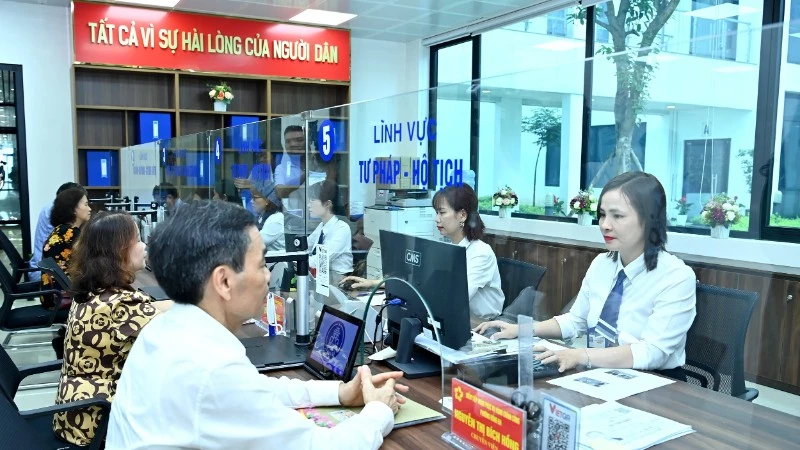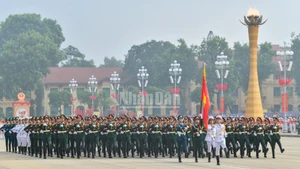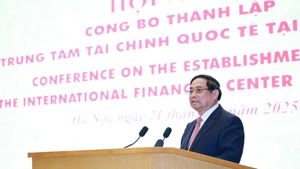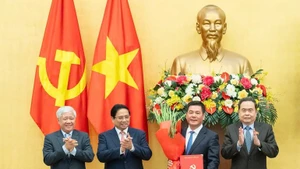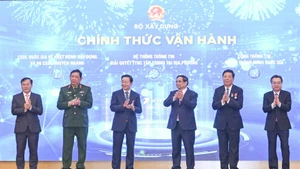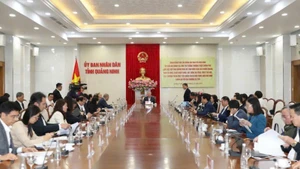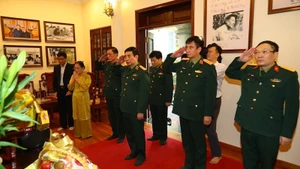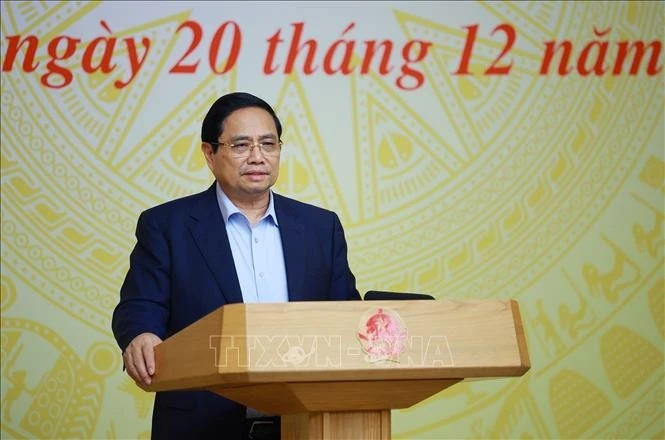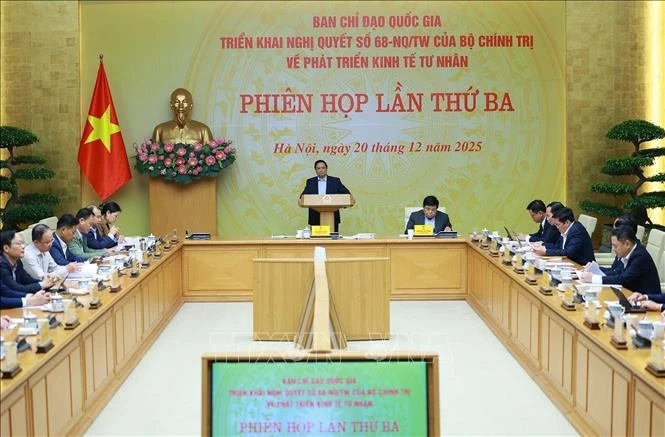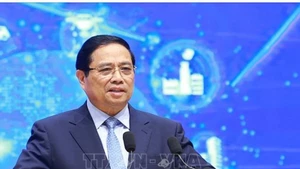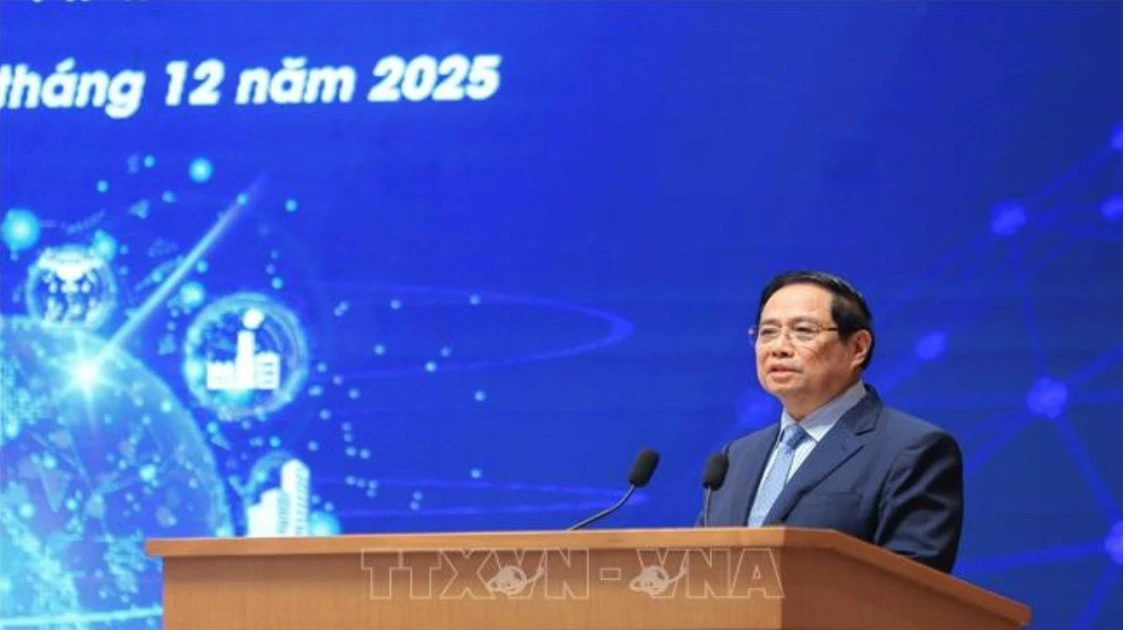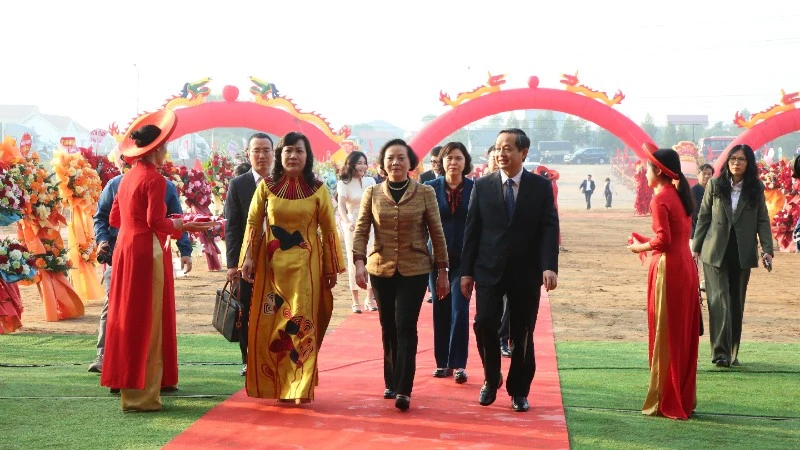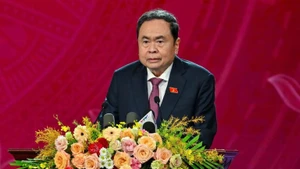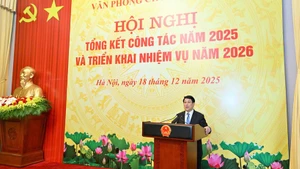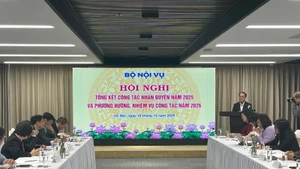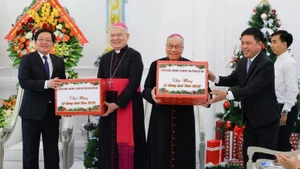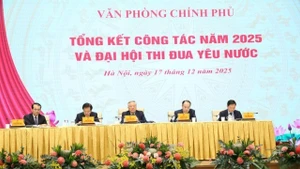Creative and decisive approaches in preparing and organising Party congresses at all levels have further affirmed the ruling Party’s role and responsibility, along with its determination to renew leadership methods comprehensively to build and develop a prosperous and powerful nation.
Party congresses at all levels leading up to the 14th National Party Congress carry historic significance, setting forth a vision and strategic decisions for the country’s development in a new era. From broad orientations to concrete tasks, the Party Central Committee and organisations at all levels have demonstrated determination to face reality head-on, speak frankly about shortcomings, and persistently drive strong changes—starting right from the process of reviewing the implementation of the goals and tasks of the 13th Congress term.
In a very short time, the policy of streamlining and restructuring the political system’s organisational apparatus, merging and reorganising administrative units, has been implemented decisively and urgently. In practice, the spirit of “organising while moving forward” has marked a strong transformation—an innovative breakthrough in leadership methods, enhancing the leadership and governance capacity of Party committees and organisations during the preparation of Party congresses at all levels.
Consistent policy implemented with breakthroughs
The policy of building a streamlined political system apparatus that operates effectively and efficiently has consistently been reflected in the Party’s documents and resolutions, particularly throughout the 40 years of Doi Moi (Renewal). Reviewing the documents of previous Party Congresses, it can be seen that shortcomings and weaknesses were repeatedly identified, with tasks set out for administrative reform, streamlining organisational structures, or studying and establishing new models to improve the effectiveness of organisations and the overall apparatus of the political system.
At its 6th Plenum, the 12th Party Central Committee issued a thematic resolution on continuing to renew and restructure the political system apparatus for streamlined, effective, and efficient operation (Resolution No. 18-NQ/TW, dated October 25, 2017). During the drafting process for the 14th Party Congress documents, and after reviewing seven years of implementing Resolution No. 18, the Party Central Committee stated clearly: shortcomings, limitations, delays, and a lack of decisiveness in executing the policy of renewal and restructuring of the political system apparatus have caused many serious consequences. A cumbersome apparatus has led to waste and hindered development, becoming one of the reasons why many of the Party’s policies have been slow to materialise in practice, with some policies never implemented or carried out only formally.
The policy of building a streamlined political system apparatus that operates effectively and efficiently has consistently been reflected in the Party’s documents and resolutions, particularly throughout the 40 years of Doi Moi (Renewal).
In November 2024, at the first meeting of the Central Steering Committee for reviewing the implementation of Resolution No. 18, General Secretary To Lam, Head of the Committee, emphasised that reviewing Resolution No. 18 was an especially important task—nothing less than a revolution in reorganising the political system apparatus. It must be carried out with the highest determination and decisive action from the entire political system. Following the Party Central Committee’s direction, all levels, sectors, localities, and units worked urgently, relentlessly, with no days off, to finalise organisational restructuring plans that are truly streamlined. Alongside the review of Resolution No. 18—building on its results while identifying shortcomings, bottlenecks, and constraints—the Party immediately launched a renewed determination to reform and enhance the effectiveness and efficiency of the political system.
In November 2024, at the first meeting of the Central Steering Committee for reviewing the implementation of Resolution No. 18, General Secretary To Lam, Head of the Committee, emphasised that reviewing Resolution No. 18 was an especially important task—nothing less than a revolution in reorganising the political system apparatus. It must be carried out with the highest determination and decisive action from the entire political system.
Following the Party Central Committee’s direction, all levels, sectors, localities, and units worked urgently, relentlessly, with no days off, to finalise organisational restructuring plans that are truly streamlined. Alongside the review of Resolution No. 18—building on its results while identifying shortcomings, bottlenecks, and constraints—the Party immediately launched a renewed determination to reform and enhance the effectiveness and efficiency of the political system.
Former Standing Deputy Secretary of the Bac Kan Provincial Party Committee Phuong Thi Thanh affirmed: “This is a remarkable breakthrough, carried out by our Party in its efforts to renew leadership methods and enhance the Party’s leadership and governance capacity.”
Ho Si Quyet, Secretary of the Party Cell of Residential Group 14, Dong Hai Ward, Khanh Hoa Province, remarked: “Reviewing the implementation of resolutions is not about commendation or achievements, but about facing reality and speaking frankly in order to urgently issue new policies, address shortcomings, and immediately put new policies into practice.”
From here, the spirit of “running while arranging”—where the Central level does not wait for the provincial level; the provincial level does not wait for the district level; and the district level does not wait for the grassroots—immediately became a reality in every task of each locality and unit.
Just one month after the first meeting of the Steering Committee, the Politburo issued a decision on the functions, tasks, authority, organisational structure, and working relations of 13 Party commissions and institutions, the Vietnam Fatherland Front Central Committee, and mass socio-political organisations at the central level. This demonstrated the pioneering spirit and exemplary role of the Party’s advisory and assisting bodies at the Central level.
Discussing the practice of “running while arranging,” many cadres, Party members, and public opinions agreed that the determination of the reform was clearly reflected in weekly and monthly results, shown through concrete numbers. At the Central level, reductions included 4 Party bodies; 5 ministries and 3 government-affiliated agencies; 5 National Assembly agencies; 25 Party committees under the management of the Party Central Committee, 16 Party delegations; 30 general department-level entities and equivalents; 1,025 department and bureau-level entities and equivalents; 4,412 division and sub-department-level entities and equivalents; and 205 public non-business units. At the provincial and district levels, reductions included 66 Party committees, 644 Party delegations and committees under Party control, 1,021 advisory and assisting agencies, and 1,778 specialised agencies.
Decisive action with clear responsibility, tasks, and timelines
The breakthrough effort to renew leadership methods by Party committees and organisations during the review of the 2020–2025 term and the preparation for Party congresses at all levels for the 2025–2030 term has been demonstrated through the streamlining of organisational structures, adjustments of administrative boundaries, and the operation of the two-tier local government model. These policies were implemented immediately. Conclusions and action plans clearly specified each task, deadlines for completion, responsible agencies and individuals, and were regularly updated to minimise delays. The determination was evident at every milestone.
In February 2025, the Party Central Committee assigned the Party Committee of the Government to coordinate with relevant agencies in researching the orientation of further abolishing the intermediate administrative level (district level), restructuring the commune level to fit the new organisational model, and considering the merger of certain provincial-level administrative units, with a report to be submitted to the Politburo in the third quarter.
Yet within just eight weeks, on the closing day of the 11th Central Committee Conference, the Party Central Committee issued Resolution No. 60-NQ/TW (April 12, 2025), approving the policy of amending and supplementing several articles of the 2013 Constitution, merging provincial-level administrative units, abolishing the district level, consolidating commune-level units, and establishing the two-tier local government model.
Two days later, the Steering Committee issued Plan No. 147-KH/TW, assigning responsibilities for 121 groups of tasks, each with precise deadlines measured by the day. Progress was reported weekly, with adjustments to policies and mechanisms made promptly based on local realities. The Steering Committee set clear expectations: no fear of difficulty, no fear of challenge, with no hesitation in facing challenges and no tolerance for unnecessary delay. Relevant agencies worked closely together, providing regular guidance, supervision, and immediate problem-solving. For the first time in the history of the Viet Nam Fatherland Front, the interval between two reorganizations of functions, duties, and structure was just six months (December 28, 2024, to July 1, 2025, when Decision No.304-QD/TW took effect).
After just over 11 weeks of implementing Resolution No.60, July 1, 2025, marked a historic milestone in the operation of the political system as the two-tier local government model officially came into effect. For the first time in nearly half a century, Viet Nam had the lowest number of provincial-level units with 34 provinces and cities, ending the operation of 696 district-level units. The country now has 3,321 commune-level administrative units, a reduction of 66.91%.
The breakthrough effort to renew leadership methods by Party committees and organisations during the review of the 2020–2025 term and the preparation for Party congresses at all levels for the 2025–2030 term has been demonstrated through the streamlining of organisational structures, adjustments of administrative boundaries, and the operation of the two-tier local government model.
Commenting on these figures, veteran Party member Nguyen Tien Mieu, 78 years old with 58 years of Party membership from Nhan Hoa Ward, Bac Ninh Province, said: “Since its founding, our Party has never shown complacency or satisfaction with achievements, but has always strived and persevered to create breakthroughs in policies and guidelines, paving the way for historic turning points in the struggle for national independence and in national construction and defence.”
The Party Committees of Hai An Ward and Gia Loc Commune were selected by the Hai Phong City Party Committee to hold pilot Party congresses. In July 2025, alongside urgent preparations for these congresses, they faced the unprecedented challenge of managing the heavy workload under the new two-tier local government model. The congress documents of both localities immediately incorporated Central directives, identifying breakthroughs such as renewing leadership thinking and methods of Party committees and governance; fostering private-sector economic development; and accelerating digital transformation. According to statistics, in July alone, the Party Committee of Hai An Ward issued 266 documents, while the People’s Committee of Hai An Ward issued 456 documents to implement directives from higher levels and organise implementation.
The Party congresses at all levels for the 2025–2030 term, moving toward the 14th National Party Congress, are historic events and pivotal milestones that open a new stage of development.
From breakthroughs in reviewing the past term to innovations in leadership methods and enhancing the leadership and governance capacity and combat strength of grassroots Party organisations, the process of setting goals, policies, and solutions has demonstrated determination to further advance comprehensive and synchronised reform. With unity and shared resolve, the Party and people are striving to successfully achieve the country’s development objectives by 2030 and its vision to 2045.
